
B&A: Space-Savvy Projects Turn a Patch of Grass into a Relaxing Patio for $2000
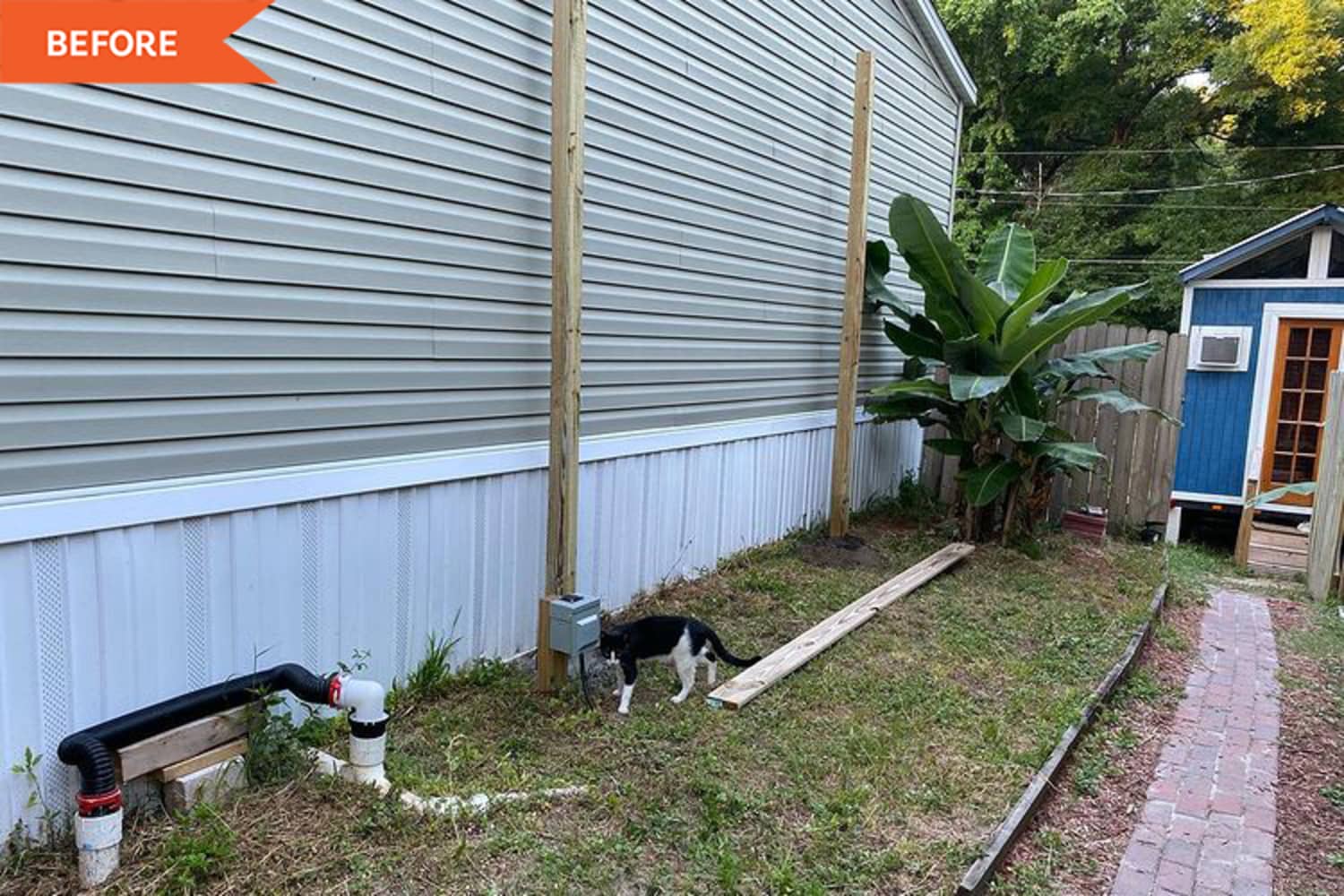


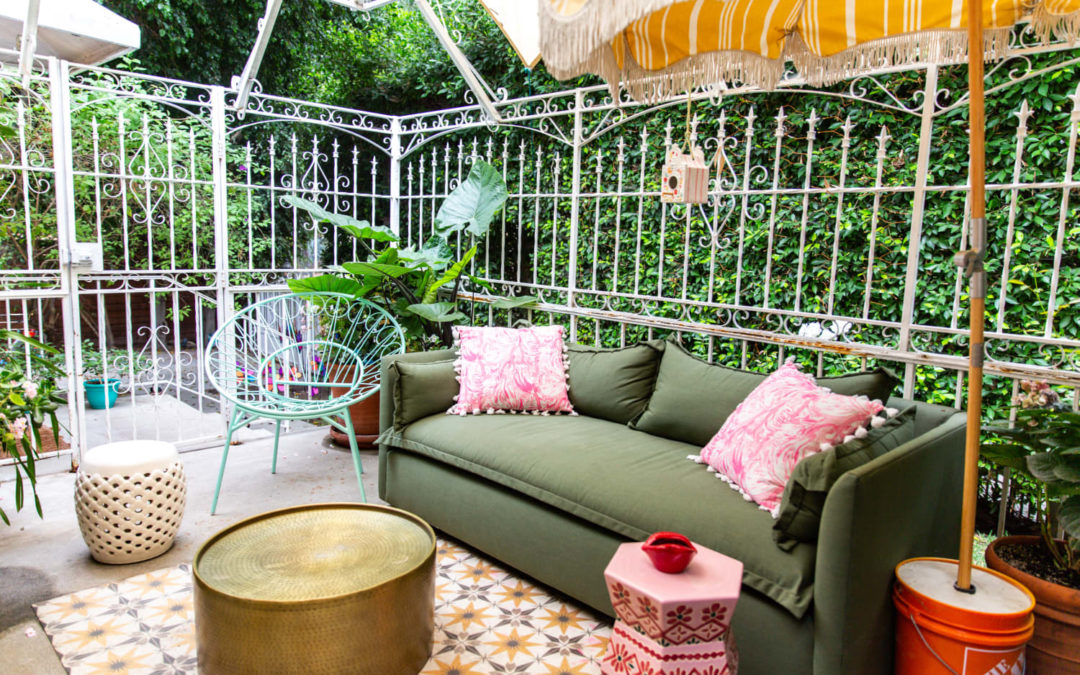
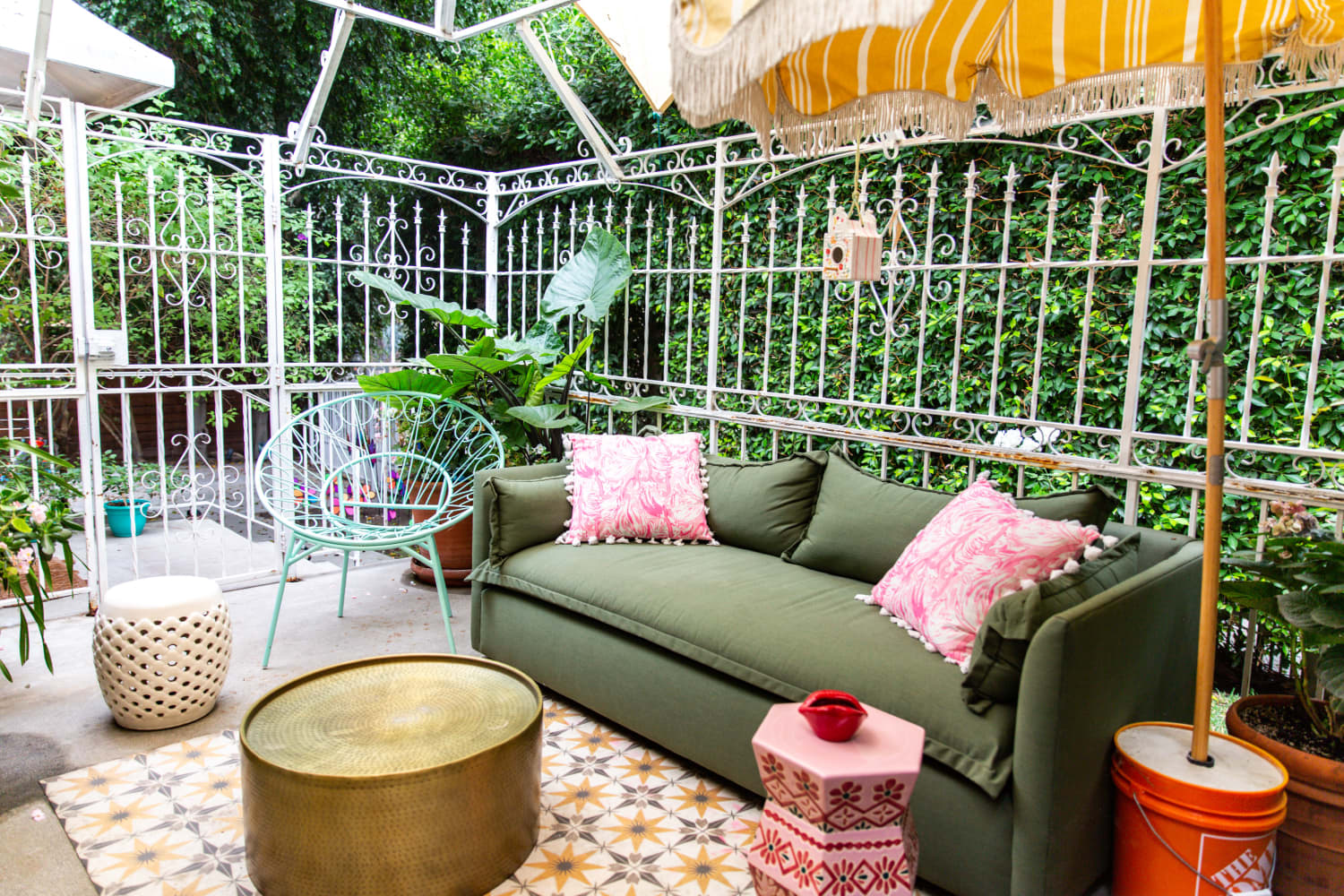
Have you ever come across a piece of furniture you thought was perfect for your patio or balcony, but it wasn’t quite outside friendly? It happens, and it’s especially frustrating considering that patio furniture can be pretty limited in terms of choice or availability, making it tricky to find something that fits your vision for an outdoor oasis that is also safe to use or leave outside. If this is you, then there are some simple workarounds here. While you can’t make all furniture weatherproof — sorry! — there are some tricks to help make certain pieces more outside-ready. Start with these simple DIY weatherproofing tips below.
Do you have a wooden table that would make the perfect patio dining table, or a wooden bench that would look lovely underneath your backyard tree? Turn it into an outdoor piece with the help of sealant.
“While ideally you would choose furniture made of naturally water-resistant materials like cedar, teak, or cypress woods, any wood furniture can be treated with an outdoor sealant,” says Morgan McBride, founder of DIY home improvement website CharlestonCrafted.com. “Pretty much every sealant brand makes outdoor sealants. Look for something clear, and be sure to note if the sealant is glossy or matte, which can really change the final look of your wooden furniture.” This way, you don’t have to worry that a light drizzle will warp your wood.
Whether you want to give outdoor cushions an extra boost in protection or wish to weatherproof a certain pillow, waterproofing sprays are at your service. “Outdoor cushions are usually made of water-resistant materials, but adding a coat of an outdoor weather shield, like Scotchgard, is a great way to give it further protection. This will help prolong the fabric’s life and foam,” McBride says.
Just make sure only to use it on washable fabrics — you won’t get the same results with leather, for example. Look at the tag of your pillow or cushion. If it’s X-coded, it means it can’t be cleaned with solvents or water. That means you can’t coat it with a weather shield, either.
Did you find a great couch, some unique seats, or a perfectly sized pillow, but the cushions aren’t waterproof? (Been there.) Keep the frame and the foam, but swap the cloth for waterproof fabrics. “During my travels to India and Southeast Asia, I was entranced by the fabric-making traditions of the local artisans. I decided to take those traditions outside with a Sunbrella partnership. This performance fabric is resistant to mold, mildew, staining, and fading, making it suitable for outdoor use,” said textile designer John Robshaw. You can make the furniture much more waterproof if you use performance fabric that could take a bit of a beating. Just reupholster your pieces with it.
This tip isn’t so much about waterproofing, but it will help your outdoor rug look nicer for longer. If you feel like your outdoor rugs get warped after a while, velcro can help remedy that issue.
“Outdoor rugs tend to get blown around in the wind, which can lead to them getting creased or warped. You can add strips of peel and stick velcro to the underside of the rug to hold it in place,” says McBride. “The velcro is removable in the future if you stop using the rug. If your outdoor rug gets dirty, the easiest way to clean it is with a pressure washer!” (Still shopping for an outdoor rug? These are on sale this weekend.)
And finally, one of the best ways to waterproof non-waterproof furniture is to cover it with a tarp or furniture cover when you know a storm is coming. “It isn’t pretty, and might not be practical for everyday use, but putting on covers before big rainstorms or during long periods of time when the furniture won’t be needed is the best way to keep it in great shape,” advises McBride.

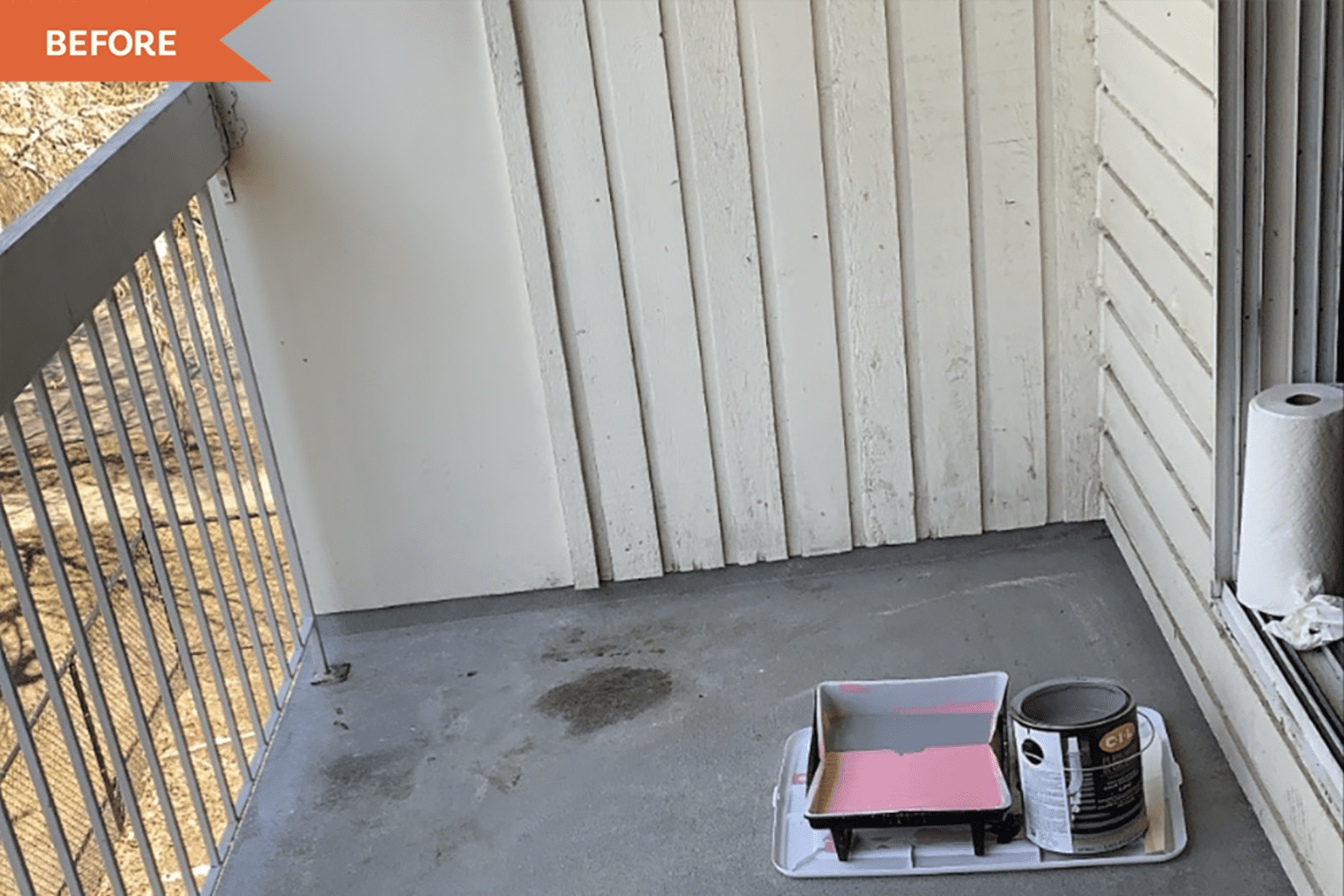

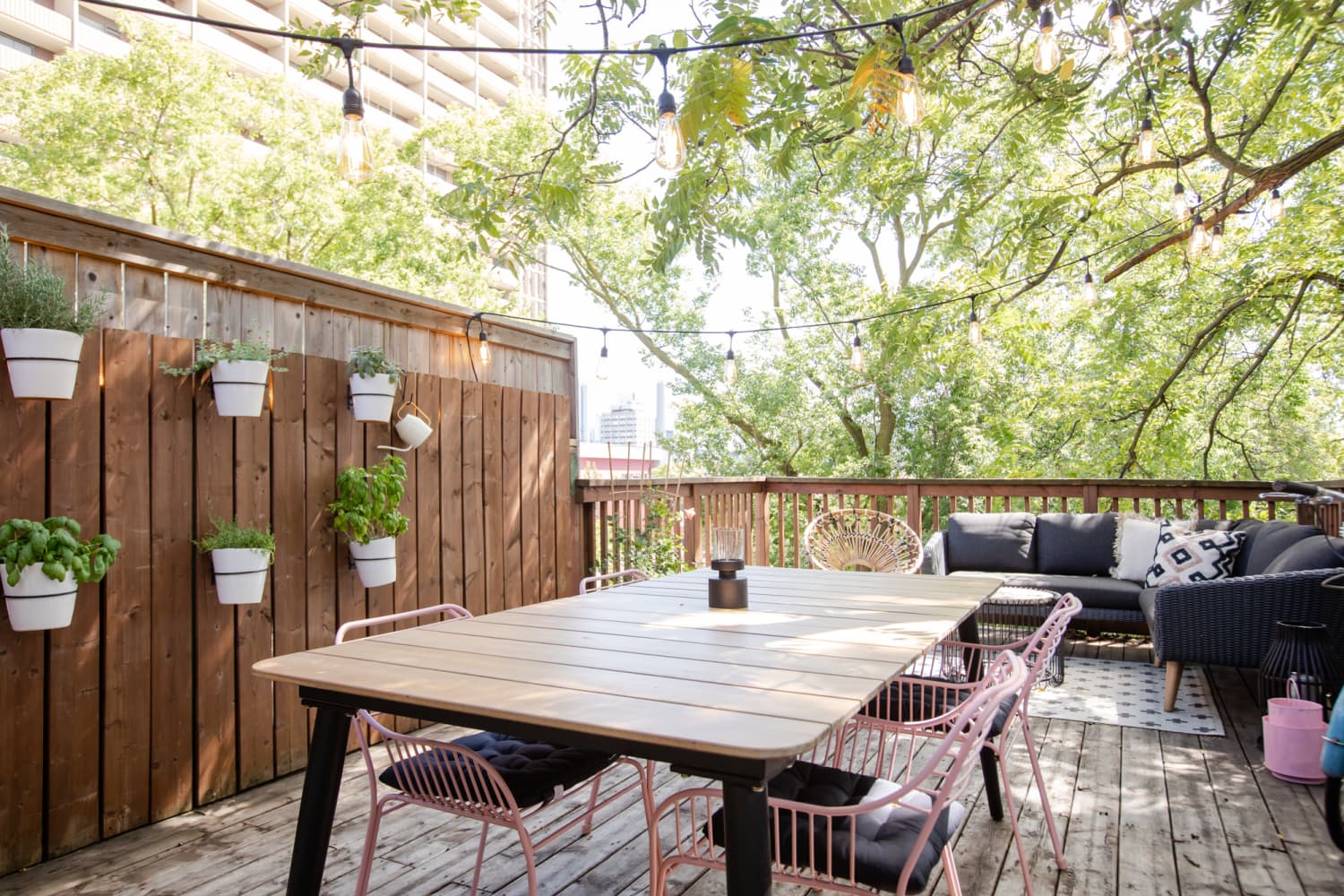
We independently select these products—if you buy from one of our links, we may earn a commission. All prices were accurate at the time of publishing.
Everyone who lives in a place with outdoor space wants a beautiful set of outdoor furniture, but it’s difficult to spend good money on white cushions and decorative pillows when you know debris will just dirty it in a matter of weeks, if not days. Nature isn’t tidy, and you can only expect that your couches and chairs will be littered with a fine layer of dust, twigs, crunchy leaves, and whatever else your backyard can throw at it.
I live in a three-story apartment building, and since my unit is on the second level, my back porch has a roof. The only downside is that it’s made from wood and has slat openings, so all of the dust sprinkles down onto my patio set below. We’re also surrounded by trees — which is lovely — but that means that twigs and leaves fall on the table and chairs.
Since it gets so messy so quickly, we don’t really use that space as much as we’d like, because no one feels like brushing off the debris just to drink a cup of coffee or sip a glass of wine. In an effort to make it a little more manageable this season, I researched how to protect outdoor furniture from falling debris. Here is what I learned, because something tells me I’m not alone on this one.
Even if you have a balcony or back porch with an overhang, an umbrella will give you an extra layer of protection. When you’re not using your set, you can angle the umbrella to cover the balcony opening, stopping some of the debris from falling into your space. Or if you have a wooden porch, the umbrella will stop the upstairs soot from falling all over your cushions and rugs. My mom let me borrow an extra patio umbrella she had in her basement to test drive this option, and I really liked it! Thanks to its jaunty angle and cheerful stripes, it turned my back porch into a little cafe. I also like that it made the spot feel more intentional, since its shape carved out the nook from the rest of the staircase.
One of my closest friends has a deck, and his backyard is flanked with trees. Because of that, his patio furniture is constantly littered with leaves. The easiest solution for him was to invest in an off-white outdoor cover (so it was still relatively aesthetically pleasing,) which he would then stuff into a giant wicker box by the couch when he took it off. It was simple, it caught all of the debris, and having a designated place to put it after removing it made the process less clunky. He didn’t have to fold it, and it wasn’t sitting crumpled on the deck floor like an eyesore. This is currently the solution I’m using, plus one extra preventative method. (See below!)
If your HOA or landlord doesn’t restrict it, get a balcony cover to stop debris from falling into your outdoor space. You can leave it up when you’re not using the area (or want a little more privacy,) and take it down when you want to see the views or let more sunshine in. There are plenty of different screen styles to choose from on Amazon, but you can also get outdoor blinds to make the retraction easier or heavy outdoor curtainsto draw shut.
I personally like the curtain idea the best because it feels like it would require less fuss, but I’m not sure if this will work for my back porch since it will restrict my neighbors’ view. But if I had a standalone balcony, I would definitely do this.
So, I’ll be honest. I love using the cover when I know I’m not going to be stepping out onto the porch daily — like, say, during the work week on chillier months. But if the weather is warm and sunny and the weekend is nearing, I don’t want to take the cover on and off once or twice a day. So I leave a handy cordless handheld vacuum by the door, which I use to clean up any fallen debris or dust. Since that debris accumulated in the span of a few hours or a day, there isn’t much to clean. But it’s still easier to use than picking up leaves with your hands or shaking dirty pillows over the rail.
If you get a ton of leaves and twigs, using a normal handheld vacuum won’t work. In that case, get an outdoor vacuum to pick up more debris without clogging. It’s a little clunkier, but you can easily store it by the door or in an outdoor cabinet or bench.
This piece is part of Get Outside Month, where we’re covering all things out-of-the-house, from curb appeal tips to al fresco hobby ideas. Whether you have a backyard, a patio, or 1 square foot of a fire escape. Head over here to read more!